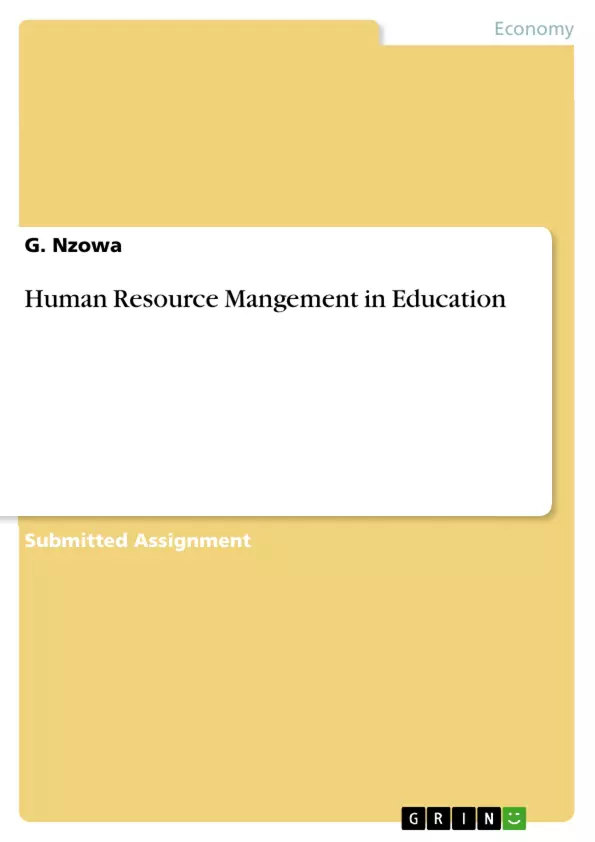This paper deals with the following questions: (1) Find out about five basic characteristics you want to be possessed by the employees in your ideal organization, then suggest the methods to be used to obtain people with those qualities. (2) Explain the evolution in understanding treatment and use of people who are working in an organization. Identify the key concepts used to refer to those people and their management at different times in the evolution process. (3) Discuss the major issues related to the government employees’ management in schools in Tanzania.
Inhaltsverzeichnis (Table of Contents)
- QUESTION ONE
- First, strong work ethic
- Second, self-motivated employees
- Third, team-oriented
- Fourth, flexible and adapting in a meaningful way
- Firth, positive attitude
- QUESTION TWO
- QUESTION THREE
Zielsetzung und Themenschwerpunkte (Objectives and Key Themes)
This text explores the critical role of human resource management in educational institutions, specifically focusing on the characteristics and recruitment of ideal employees. It delves into the evolution of employee management practices within organizations and examines the major issues surrounding the management of government employees in Tanzanian schools.
- Characteristics of ideal employees in educational settings
- Recruitment strategies for securing qualified staff
- Evolution of employee management practices
- Challenges in managing government employees in Tanzanian schools
- The significance of work ethics, self-motivation, and team-oriented skills in educational institutions
Zusammenfassung der Kapitel (Chapter Summaries)
QUESTION ONE
This chapter delves into the essential qualities of ideal employees within an organization. It highlights five crucial characteristics: strong work ethics, self-motivation, team-orientation, flexibility, and a positive attitude. The chapter explains the significance of each trait and its impact on organizational success. It then outlines strategies for attracting and recruiting employees who possess these desired qualities.
QUESTION TWO
This chapter examines the evolution of employee management practices, tracing the shifts in understanding and treatment of workers throughout history. It identifies key concepts and approaches used to manage employees at different stages in this evolution.
QUESTION THREE
This chapter focuses on the specific challenges and issues related to the management of government employees in schools in Tanzania. It explores the unique context of this sector and identifies the key concerns and considerations for effective management.
Schlüsselwörter (Keywords)
The key terms and concepts explored in this text include human resource management, education, employee characteristics, recruitment strategies, work ethics, self-motivation, team-orientation, flexibility, positive attitude, government employees, Tanzanian schools, and organizational success.
- Arbeit zitieren
- G. Nzowa (Autor:in), 2019, Human Resource Mangement in Education, München, GRIN Verlag, https://www.grin.com/document/490494



